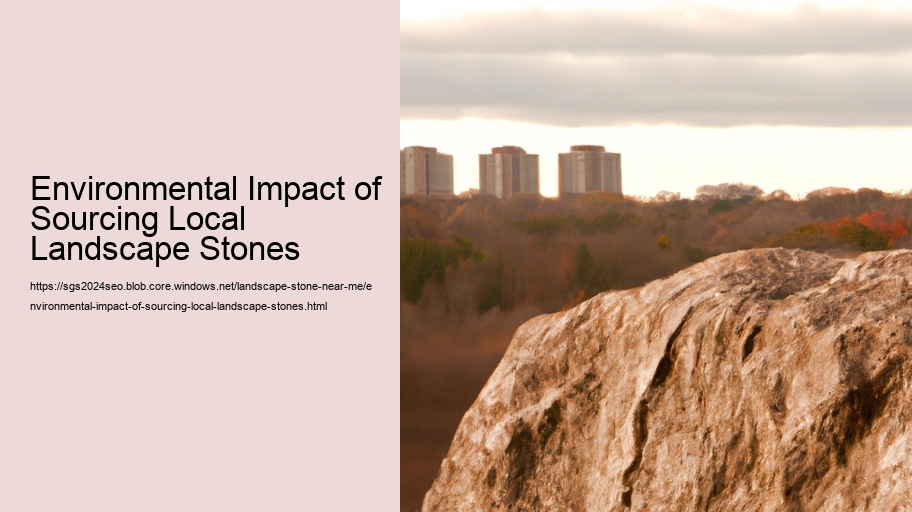Title: The Environmental Impact of Sourcing Local Landscape Stones
Maintenance Tips for Stone Landscapes .
In recent years, the environmental impact of sourcing materials has become a significant concern, particularly in the context of landscaping and construction. Among these materials, landscape stones play a crucial role due to their aesthetic appeal and functional benefits. Sourcing local landscape stones, as opposed to importing them from distant locations, presents a range of environmental implications that merit careful consideration.
Firstly, sourcing local landscape stones significantly reduces the carbon footprint associated with transportation. Transporting heavy materials across long distances requires substantial energy, typically derived from fossil fuels, which contributes to greenhouse gas emissions. By opting for locally sourced stones, the distance materials need to travel is minimized, thereby reducing the carbon emissions associated with their transportation. This not only helps in mitigating climate change but also supports local economies by directing funds to local businesses and workers.
Moreover, using local stones can significantly reduce habitat destruction and land degradation. When stones are sourced from distant locations, often the extraction processes are less regulated, leading to over-extraction and environmental degradation. Local sourcing allows for better oversight and adherence to environmental regulations, ensuring that stone extraction is conducted sustainably. This can help preserve natural habitats and maintain biodiversity, as well as protect soil and water quality in the region.
Another environmental benefit of using local landscape stones is the reduction in energy consumption during the production process. Local stones often require less processing than imported ones, which are sometimes subjected to additional treatments to meet specific aesthetic or functional criteria. Using stones in their natural form not only conserves energy but also maintains the natural beauty and character of the local landscape.
Furthermore, the integration of local stones into a landscape design promotes the use of materials that are naturally adapted to the local climate and ecosystem. This compatibility can enhance the durability and longevity of landscaping projects, reducing the need for future repairs and replacements. In turn, this minimizes waste generation and the demand for additional resources, contributing to a more sustainable approach to landscaping.
Despite these benefits, it is essential to acknowledge that sourcing local landscape stones is not without its challenges. The availability of certain types of stones may be limited in specific regions, potentially restricting design possibilities. Additionally, the local extraction of stones must be managed carefully to avoid over-exploitation and to ensure that the environmental benefits of local sourcing are not undermined by unsustainable practices.
In conclusion, the environmental impact of sourcing local landscape stones is predominantly positive, offering significant reductions in carbon emissions, habitat destruction, and energy consumption. By prioritizing local materials, we not only support sustainable environmental practices but also foster economic growth within our communities. However, careful management and regulation are necessary to ensure that the benefits of local sourcing are fully realized without compromising the health of our ecosystems. As we continue to strive for sustainable development, the use of local landscape stones represents a tangible step towards a more environmentally conscious approach to landscaping and construction.

